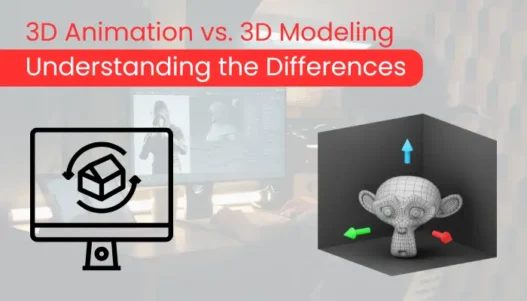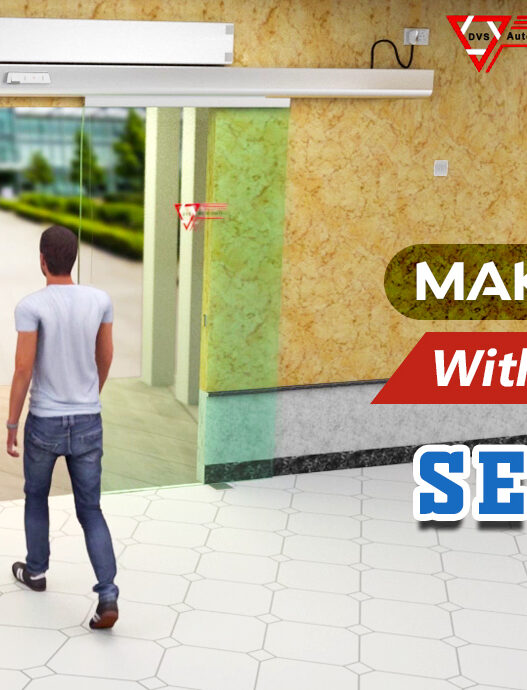The terms 3D animation and 3D modeling are often used interchangeably. However, they represent distinct processes in the creative pipeline. Understanding the differences between 3D animation vs. 3D modeling is essential for anyone looking to delve into the realms of digital art, film, gaming, or product design.
This article will break down these concepts, highlighting their unique characteristics, processes, and applications.
What is 3D Modeling?
Definition and Purpose
3D modeling is the process of creating a three-dimensional representation of an object using specialized software. This process involves generating shapes and structures that can be manipulated in a virtual space. The purpose of 3D modeling is to create a digital version of a physical object, which can then be used for various applications, including:
- Product Design: Developing prototypes for manufacturing.
- Architectural Visualization: Rendering buildings and interiors.
- Game Development: Designing characters and environments.
Key Steps in 3D Modeling
- Conceptualization: Starting with sketches or ideas to visualize the object.
- Model Creation: Using software like Blender, Autodesk Maya, or 3ds Max to build the model.
- Texturing: Adding colors, textures, and materials to give the model a realistic appearance.
- Lighting: Setting up virtual lights to enhance the model’s look.
- Rendering: Producing the final image or animation from the model
What is 3D Animation?
Definition and Purpose
3D animation takes the static images created through 3D modeling and brings them to life by creating movement. It involves manipulating the 3D model over time to produce sequences that can be used in films, games, and advertisements. The purpose of 3D animation is to convey stories or ideas visually, making it engaging for audiences.
Key Steps in 3D Animation
- Storyboarding: Planning the animation through sketches and outlines.
- Rigging: Creating a skeleton for the 3D model, allowing for movement.
- Animation: Defining the movements and actions of the model frame by frame.
- Lighting and Rendering: Similar to modeling, this step also involves setting up lights and rendering the final animated sequence.
- Post-Production: Adding effects, sound, and editing the final output.
3D Animation vs. 3D Modeling: Key Differences
Purpose and Functionality
The primary difference between 3D animation vs. 3D modeling lies in their purpose. 3D modeling focuses on creating static representations, while 3D animation is concerned with movement and storytelling.
- 3D Modeling: Creates the visual assets.
- 3D Animation: Uses those assets to create dynamic visuals.
Process Involvement
While both processes can be interconnected, they involve different skill sets and tools. 3D modeling requires a deep understanding of geometry, textures, and rendering techniques. Conversely, 3D animation relies heavily on knowledge of motion principles, timing, and storytelling.
Software Used
Different software tools are typically employed for each discipline. For 3D modeling, popular software includes:
- Blender
- Autodesk Maya
- 3ds Max
For 3D animation, one might use:
- Cinema 4D
- Adobe After Effects
- Toon Boom Harmony (for animation)
Applications of 3D Modeling and 3D Animation
3D Modeling Applications
- Product Visualization: Companies use 3D models to showcase products before they are manufactured.
- Architectural Design: Architects create models to visualize buildings and landscapes.
- Medical Imaging: 3D models help in understanding complex biological structures.
3D Animation Applications
- Film and Television: Animators create characters and scenes for movies and series.
- Video Games: 3D animation is crucial for character movements and environmental interactions.
- Advertising: Animated ads engage viewers and convey messages effectively.
Choosing Between 3D Animation and 3D Modeling
When deciding between 3D animation vs. 3D modeling, consider your project’s goals. If you need a static visual representation for a product or architectural design, 3D modeling is the way to go. However, if your aim is to tell a story or create an engaging video, then 3D animation will be essential.
To Wrap Up
Understanding the differences between 3D animation vs. 3D modeling is crucial for anyone involved in digital design. While both disciplines are interconnected and share similar tools, they serve distinct purposes and require different skill sets. By recognizing these differences, you can better navigate your projects and make informed decisions.
If you are looking for 3D animation or 3D modeling India designers for your requirements, you can outsource through Invedus Outsourcing. Invedus specializes in delivering top-tier 3D modeling services that bring your concepts to life with precision, creativity, and attention to detail. Whether you need product models, architectural renderings, or marketing-ready visuals, Invedus’ expert designers use industry-leading tools such as Autodesk 3ds Max, Maya, and Photoshop to create models that captivate and inspire.
For Read More Blogs You Can Explore this Website Also: chemhubglobal.com










